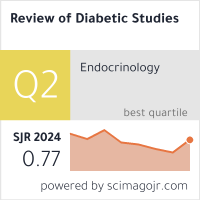Transforming Self-Care: Infotechnological Solutions For Patients With Systemic Lupus Erythematosus
DOI:
https://doi.org/10.1900/ne5nnm02Keywords:
Systemic Lupus Erythematosus, Self-care Education, Nursing, Autoimmune Diseases.Abstract
Introduction: Systemic Lupus Erythematosus (SLE) is a chronic inflammatory and autoimmune disease of a multisystemic nature that requires lifestyle adaptation by those affected. Therefore, the importance of providing information and education to individuals with the disease is emphasized, focusing on self-care to mitigate stress, anxiety linked to uncertainty, and promote engagement in self-care practices. This need highlights the relevance of having technological methods and tools to facilitate effective disease management and improve the quality of life. Objective: To design an infotecnological tool aimed at strengthening the self-care capacities of patients with Systemic Lupus Erythematosus attending the Clínica de la Costa. Material and Methods: A descriptive quantitative approach was used, involving 444 lupus patients from the Clínica de la Costa in Barranquilla, Colombia. The short-term research was conducted in two phases: 1) characterization of the population in aspects such as age, gender, severity level, comorbidities, and disease knowledge; 2) design and pilot testing of the infotecnological tool.Results: The average age of the patients was approximately 41 years, with 87.2% (387) being women. The most prevalent comorbidities included hypertension (18.7%), diabetes mellitus (1.6%), dyslipidemia (1.4%), Cushing's syndrome (2%), osteoporosis (2%), and metabolic syndrome (0.2%). 27% (120 patients) presented active disease, with 18.7% (83) at a severe level, 5.6% (25) at a moderate level, and only 2.3% (10 patients) presenting a mild severity level with high knowledge. Conclusions: The majority of patients were female and over the age of 39; most of them had inactive lupus with a high level of knowledge. The technological tool was validated by the users, who gave it ratings between 4 and 5 and qualitative evaluations ranging from good to excellent.
Downloads
Published
Issue
Section
License

This work is licensed under a Creative Commons Attribution-ShareAlike 4.0 International License.


